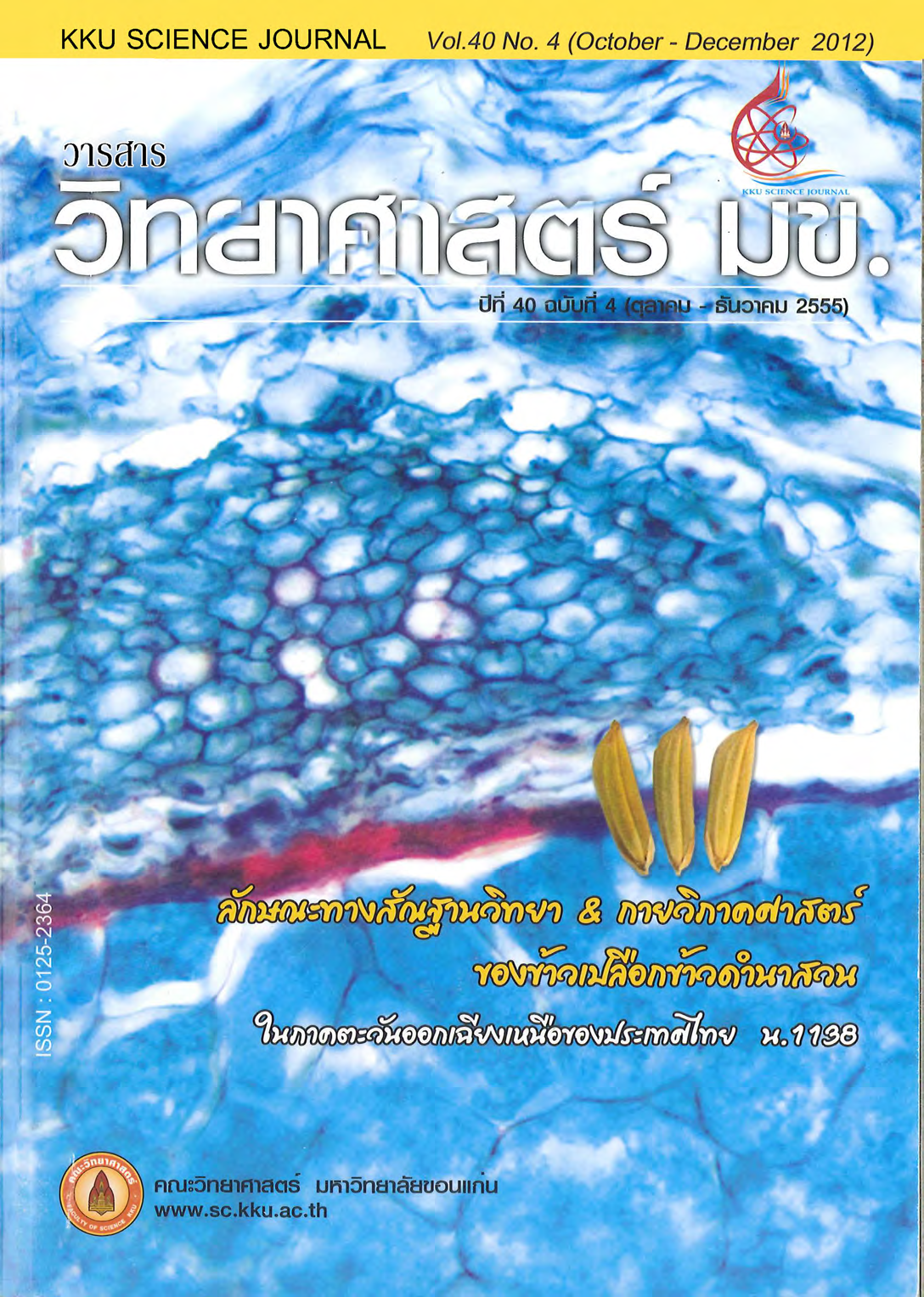Physiological Responses of Soybean when Grown in Saturated Soil Culture
Main Article Content
Abstract
A study of the physiological responses in soybean cultivars “Chakkrabhanhu” No.1 when grown in saturated soil culture compared with the conventional irrigation soybeans was conducted at Lampang Agricultural Research and Training Institute, Rajamangala University of Technology Lanna, Lampang province. Study involved with recording and data gathering on growth characteristic in terms of dry matter and physiological characteristic such as the green of leaves, photosynthetic rate, transpiration rate, leaf water potential and nitrogen fixation. Experiments were conducted using factorial in Completely Randomized Design (CRD). Results of this study revealed that soybean grown in saturated soil culture had the tendency of producing growth and yield as similar to those receiving conventional irrigation. In term of physiological characteristics, the chlorophyll content in soybean’s leaves could be used as indicator for acclimatization, at the point where the chlorophyll contents which were previously dropped at the earlier stage of growth when receiving saturated soil culture, returned to level similar to those of the conventional irrigated soybeans at V5-V6 growth stage. In addition, saturated soybeans demonstrated the higher rate of photosynthesis than those grown in the conventional irrigation. The results also revealed that transpiration rate, leaf water potential and N2 fixation of the saturated soybean were much greater than the control; the current data were correlated with the previous findings which indicated that the leaf water potential, water use efficiency, and nitrogen fixation had made the saturated soybeans approached the acclimatization point more readily after suffered from brief flooding. As the result, saturated soybeans recovered and adjusted themselves through the increase in photosynthesis and finally increased their growth and yield up to the level similar to the conventional irrigation.
Article Details

This work is licensed under a Creative Commons Attribution-NonCommercial-NoDerivatives 4.0 International License.


